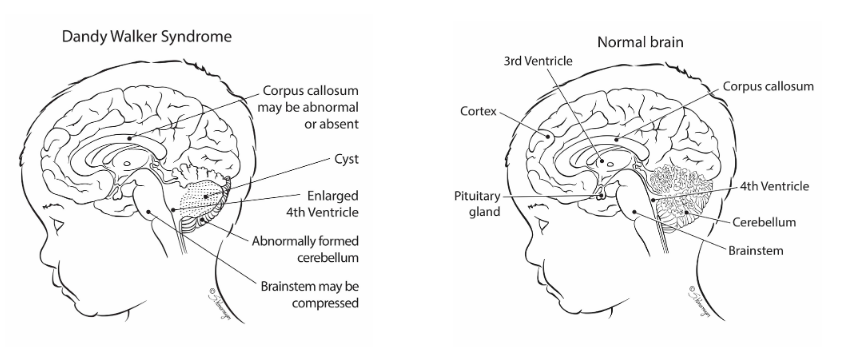Dandy Walker Syndrome
Dandy Walker Syndrome

Dandy-Walker Syndrome (DWS) is a congenital (happening before birth) condition where the cerebellum does not develop normally. The cerebellum is an area at the back of the brain that controls movement and balance.
With DWS, parts of the cerebellum may never develop or may be very small. Other parts of the cerebellum become filled with fluid or develop small masses of fluid (cysts). In most cases, a build-up of fluid inside the skull causes the head to get bigger than it should.
DWS can occur by itself, or along with other types of birth defects. Children with DWS may also have heart problems, face or limb defects or problems with vison and hearing. In rare cases, DWS may not be diagnosed until late childhood or adulthood. DWS can cause delays in both motor and mental development. The severity of symptoms and long-term outcomes are different for each child. Some children need a lot of medical care at birth but go on to live normal lives with few or no long-term effects. Other children may lose the ability to move parts of their body (paralysis), seizures and problems with thinking and learning.
The long-term survival rate for infants with isolated DWS is often good. If DWS appears with other genetic conditions, outcomes can vary. Early treatment to support physical and mental development improves a child’s chances of having the best quality of life possible for their condition.
More information about Dandy Walker Syndrome can be found here and here
